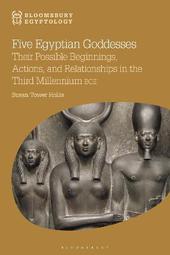
|
Five Egyptian Goddesses: Their Possible Beginnings, Actions, and Relationships in the Third Millennium BCE
Paperback / softback
Main Details
Description
This volume explores the earliest appearances and functions of the five major Egyptian goddesses Neith, Hathor, Nut, Isis and Nephthys. Although their importance endured throughout more than three millennia of ancient Egyptian history, their origins, earliest roles, and relationships in religion, myth, and cult have never before been studied together in detail. Showcasing the latest research with carefully chosen illustrations and a full bibliography, Susan Tower Hollis suggests that the origins of the goddesses derived primarily from their functions, as, shown by their first appearances in the text and art of the Protodynastic, Early Dynastic, and Old Kingdom periods of the late fourth and third millennia BCE. The roles of the goddess Bat are also explored where she is viewed both as an independent figure and in her specific connections to Hathor, including the background to their shared bovine iconography. Hollis provides evidence of the goddesses' close ties with royalty and, in the case of Neith, her special connections to early queens. Vital reading for all scholars of Egyptian religion and other ancient religions and mythology, this volume brings to light the earliest origins of these goddesses who would go on to play major parts in later narratives, myths, and mortuary cult.
Author Biography
Susan Tower Hollis is Professor Emerita at Empire State College, State University of New York, USA.
ReviewsThe latest volume in the excellent Bloomsbury Egyptology series ... An important work for any scholar of Egypt's religious tradition - with extensive notes and bibliography taking up at least one third of the volume - while at the same time offering an enjoyable read for anyone with an interest in Egypt's great goddesses. * Ancient Egypt * This book is an excellent place for anyone looking to learn more about the major goddesses of ancient Egypt, and is particularly useful to Egyptologists as a baseline source when beginning new research. * Journal of the American Research Center in Egypt *
|